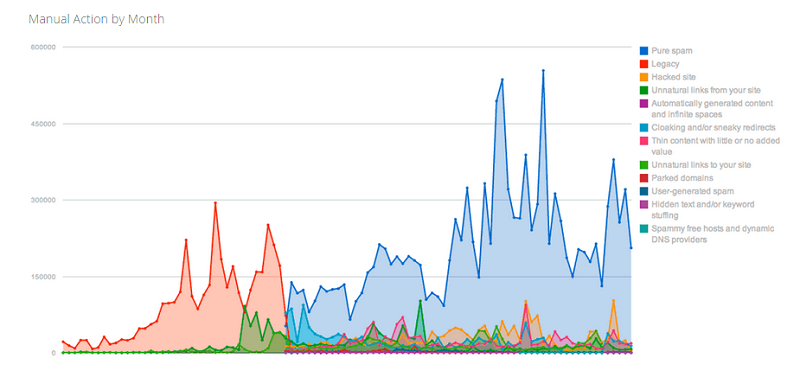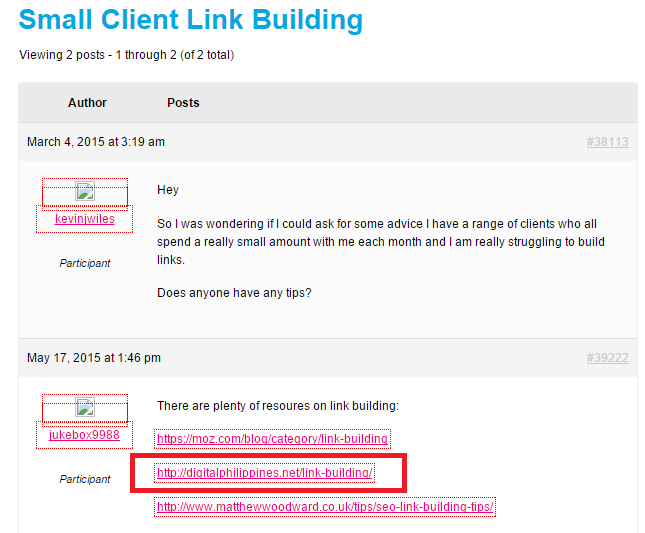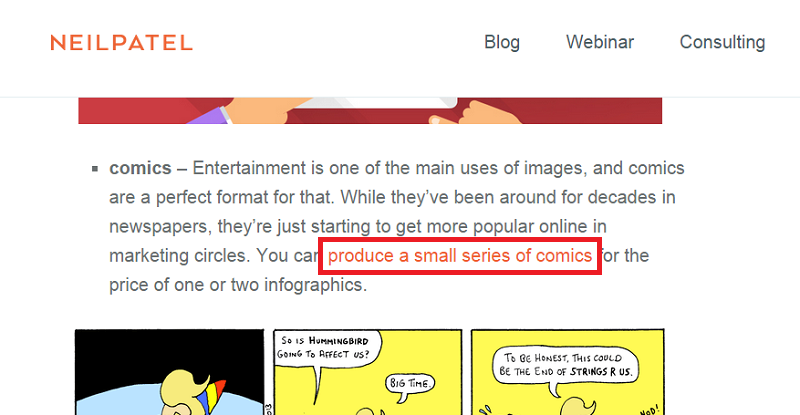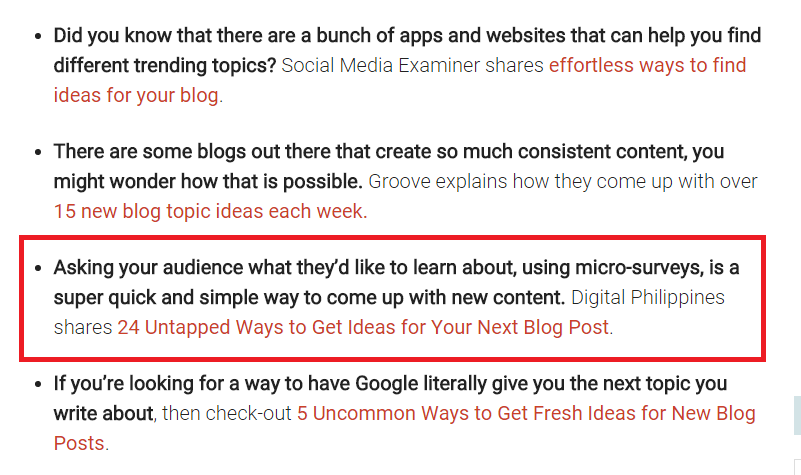by Venchito Tampon Jr | Last Updated on February 8, 2021
In 2012, after Google released its link-spam filter Penguin, many businesses started cleaning up webspam signals in their backlink profiles to be able to recover from the tragic site demotion by Google (which is just a product of marketers/bloggers’ unnatural link practices).
However, not all businesses had fully recovered from their previous downfall due to logical reasons, such as:
- The website had other technical issues that pulled it down to the bottom of rankings.
- Waiting for Google to refresh/re-ran its algorithm which will release sites that had previous link-related issues but were fixed thoroughly.
- The website’s good rankings are highly dependent on the power of links to move it up to higher rankings – the site is obviously not deserved to rank.
Probably this year Google will release its algorithm refresh, which can help sites that have already cleaned up their link profiles and demote websites with newly discovered spam.
Whether it’s a Google Penguin refresh or update that is coming this month (or probably next month), search marketers, particularly those who are specialists in link development (link builder, link marketing consultants, etc..) should be able to constantly create quality controls in their link building processes/activities/tasks in order to sustain and grow their sites’ backlinks.
Link audit is one example of a necessary quality control process in link development.
The basic foundation of a link audit system, which are also possible elements of Google Penguin filter are the following:
- Link source quality. This is best identified by looking at spammy and irrelevant sites, link networks, sites that contain artificial links and blogs with content that have low user activity.
- Ratio of the number of good vs bad links.
- Thematic relevance of linking sites/domains.
- Amount of links with exact match anchor texts (over optimization of anchor text)
- Positions of links in the linking pages (sitewide or non-sitewide such as contextual)..
Understanding deeply the said link-centric elements could help you properly execute a link audit process and/or build a link building campaign that can stand against any future Google Penguin updates.
In this post, I’ll be sharing to you 7 Penguin-proof link building tips.
1. Proper prospecting with advanced search operators
Link prospecting is the initial phase in link development where you collect a certain amount of link opportunities (blogs, sites, web communities, etc..) based on the industry’s competition level and demand.
One common way to gather a bunch of link targets is by using advanced search operators.
Search operators are phrases that can be added to searches to help narrow down the search results. They are highly useful tools in finding highly targeted domains/pages in search, as you can easily filter the pages based on opportunity types (blogs, .edu, .org, etc..) and based on thematic relevance.
For a full list of advanced search operators, you can check out this resource page on Google Guide.
In link development, there are only certain search operators that can help you pre-qualify backlink prospects in the link prospecting phase and they are as follows:
- intitle
- inurl
- site
- related
Let’s dig into each of these search tools.
intitle
The advanced search operator: intitle helps qualify pages based on thematic relevance.
On-page keywords (“swimming”) would only reveal pages that have the word, “swimming” in the body/context of the page, whereas if the intitle is added to that keyword, you would see topically-relevant pages with meta title “swimming”.
Bloggers or content creators would normally use the main topic of the article as the meta-title – giving us an idea that the whole page is highly relevant to the brand’s page/content.
Proper intitle: usage also helps you find specific audience types (swimmers, fitness instructors, etc..).
inurl
This advanced search operator is primarily used when looking for opportunity type footprints that only occur in the urls of pages.
You would normally see inurl usage in broken link building when finding links/resource pages that are relevant to the site’s content (e.g. inurl:links.html “driving safety” to find backlink prospects for a “senior’s guide to driving” content asset).
site:
Site search operator should basically be used to filter the page results based on TLDs (.us, .edu, .org, .gov, etc.).
This allows you to prioritize types of audience that you’re looking for. For instance, you want an audience of highly respected dentists in your local city, you would want to use site.org to only find dentist organizations.
related:
Related search function leaves you pages that are similar to the word(s) or domain after the colon (e.g. related:digitalphilippines.net).
There are two methods that you can use related search operator:
- Finding similar websites of your brand and of your prospected site.
- Researching for synonyms of search queries/keywords.
Advanced search operators isn’t only useful in filtering pages/content in search results but also in ensuring that prospect backlinks are topically relevant to the brand /site you want to build links to.
2. Build 10x content assets to attract editorial links
Rand Fishkin shared the principle of 10x content in one of his Whiteboard Fridays at Moz. He provided actionable tips on how to create or improve a content piece to make it 10 times greater than other brands’ similar pieces.
Here are some of his useful points:
- Examine the quality of content piece based on its relevance to the search query – does your content answers a specific question by the user?
- Improve your content in terms of site speed, mobile friendliness, rendering, layout, navigation and design quality – identify industry benchmarks regarding those technical sides to check the content’s performance on the web.
- Thoroughness and details of the information provided in the content (credible sources, backed up with data, etc..).
There are a few reasons why I believe producing 10x content is a viable tactic in ensuring a Penguin proof link building campaign.
- Data-driven and expertly-made content have higher possibilities of earning editorial links from bloggers and researchers who’ll be referencing useful references in their works (blog content). This will help diversify the site’s link profile, as you would have no control on the elements of the links earned (anchor texts, referring pages, link placements, etc..).
- A 10x content asset produces hard to replicate links from websites/blogs only in primary industry and semi-niches. This maintains the thematic relevance of the site/content towards other pages, as you won’t get any irrelevant mentions/links if they are actually earned.
For the past two years, I’ve been constantly delivering quality content assets (10x content) on my blog that somehow marked my expertise in the link building scene.
Here are a few examples of content pieces that gained some traction in the past even up to now, as they have been ranking highly in search results for multiple keyword phrases.
43 Experts Share Their Most Actionable Link Building Tip
This post from 2013 is a compilation of different link building strategies, tactics, processes and tips coming from the well-known link building experts in the world.
It currently received 45 linking root domains and had been earning several mentions in blog roundups, interviews and forums.
One example of a forum mention is from this blog of Matthew Woodward, where someone had reference the 10x content to support his answer to the user’s question.
One benefit of producing 10x content piece is its ability to amplify links and social shares even after seasonal periods (weeks/months after publication).
The said linkable asset earned an authority link from Neil Patel’s blog in his latest post on building powerful links with images.
Further Reading: 24 Untapped Ways to Get Ideas for Your Next Blog Post
This 2014 blog post caters to the huge audience of blogging (blogging newbies and practitioners) on the topic of blog ideation.
Few weeks after it was published on my website, it earned several contextual links (first tier links) from niche-specific posts of bloggers in the local and international scene.
Given that linking pages have been receiving direct and organic visits, the likelihood of getting potential linkers to mention the linking page from their own content as well as linking to my site’s content piece becomes higher.
Up until now, my blog ideation post is still receiving social shares and high quality backlinks from blogging-centric sites . A good example of this is a referential link from Blogelina, an authoritative website in the blogging industry.
One advantage of a link earning activity of 10x content (or content pillars) is its ability to diversify the site’s link profile based on the location of the links on linking pages (or commonly referred as, “link placement”).
Given that links are earned, there would be a variety of link placements. Some links are located at the bottom of the content. Others would come the footer section of websites or best, links are located on the body of the page – contextual.
Google has an idea of where each backlink is located on the page. This allows them to target a lot of websites that have backlinks from a single page location (e.g. footer or widget links). On other behalf, Google also evaluates links placed higher up in a HTML code as powerful votes to the page it is referring to, for the obvious reason that they are likely editorial and are actually earned by the brand.
Producing 10x content assets on the blog doesn’t just help the site to attract hard to replicate links from niche relevant pages but also ensures that links earned/built are indeed, beneficial to the page’s performance on search (they add value in terms of relevance and authority).
Here are some useful resources on building 10x content assets:
- Content Marketing Data That Moves the Needle
- Testing The Skyscraper Technique [Case Study]
- Creating and Promoting Link Magnet Asset Pages
When you’re in active link building campaign it is important to know how and where to put the right anchor text so you won’t harm your rankings, read more about it here.
3. Balance recency-based link building tactics
For the past several years, we’ve seen and heard various link building tactics that had been a common toolset for search marketing agencies today.
But the real question stands, is there any link building that would remain effective after a decade of use?
Link diversity is the key in content marketing, even in at using tactics to acquire links from industry sites.
There are two basic types of content based on the recency of the acquisition of links: new content and existing content.
Broken link building is a solid link acquisition tactic that simply involves reaching out to webmasters about broken links identified on their existing pages, with the hope of getting those defunct links replaced with links to the site’s content/page.
Guest blogging, alternatively, is focused on writing new articles with links placed in the, submitted to editors of blogs for publication review and hoping to build links from those content pieces when published in due time.
These two powerful link development tactics have different target pages, broken link building is focused on existing content whereas guest blogging targets new/dynamic pages of the site.
Having a moderated execution on these two tactics gives you a balanced link profile.
You can also use the following link building tactics to diversify your site’s link profile based on the recency of target link pages:
- Reach out to webmasters and content creators who mentioned any content from your brand (images, stories, products/services, content assets, etc..) and ask to give your brand credits from their pages.
- Integrate online marketing activities in your offline events (sponsorship, speaking, participation, etc..) by getting them share your latest content, providing feedback about it and/or covering your activity in their future posts (reference).
- Create a landing page for discounts/coupons/freebies of your products/services and make it visible to your target audience by doing a press release / blogger outreach campaign (reference).
4. Use different footprints for link prospecting
Link prospecting footprints are patterns in search phase that gives Google an idea on the method and progress of the brand’s link development campaign.
Building a database of backlink targets with the same footprint puts the website at an unnecessary risk.
Don’t run a massive link building campaign with the same, common and basic footprints (e.g. inurl:guest-post to overall list of prospects).
You can use other niche search engines to build a spreadsheet of link targets (not just using Google in most cases). Below are some examples.
- Finding industry bloggers on Twitter by simply doing a social search for “industry blog” OR “industry blogger”.
- Using related search operator to easily find similar blogs of your listed link prospect(s).
- Researching for niche blogs from blog search engines like Blogsearchengine.org.
Other useful resources:
- Big Prospecting with Authority Anchors: a Process Guide
- 30 Free SEO Tools and How to Use Them for Link Prospecting
5. Diversify link type through image-based link building
A variety of link types is not a big issue in link diversity. However, you have to get a feel of what your top ranking competitors are at.
If their ratios of image to text links are different from your site’s link profile, then you should be concerned on switching some of your image-based links to text ones, especially if all advertisements are linked through images.
Here are some ways to build image-based links using existing branded content:
- Determine pages that embedded your brand logo as part of other websites’ sponsorship opportunities, media/press activities (e.g. interview) and other offline turned to online marketing activities. Reach out to webmasters and ask to replace those image links with branded text ones.
- Look for industry related blogs that published copies of your infographic/visual content and tell them to link to your page using text-based approach.
Master image-based link building using the following references:
6. Create more brand awareness by targeting semi-relevant niches
Building links nowadays from semi-relevant niches is an effective way to improve your domain and brand authority, as you can increase the chances of getting new subscribers and readers as well as followers from other industries aside from your primary target group
For instance, if your company is selling wedding attires, you won’t just aim to target links from wedding blogs but you can also tap relationship and fashion blogs, which are considered semi-relevant niches.
Site relevance is an important factor that Google uses to detect spam websites/blogs that have several links coming from irrelevant verticals.
Aside from spam avoidance, targeting link prospects from semi-relevant niches also bring referral traffic to the site that could potentially convert to customers/clients.
7. Target appropriate pages in outreach
One of the simplest ways to break down your backlinks by target page is through seeing the ratio of home page links to deep links.
As you develop links over time, you don’t want to have all links go to your home page, as it would signal to Google that is the only essential and worthy of ranking page in your site.
Having most of your links point to your deep pages allows you to have a balanced link profile in terms of target page(s).
You can properly diversify your links by measuring via the Deep Link Ratio: # of deep links over # of total links.
You can calculate this by getting the total number of links using your favorite link building tool (I prefer you only look at referring domains instead of seeing the number of total links – since most of them are sitewides). Then get the number of homepage links and subtract it from your total # of referring domains to get the # of deep links.
A few practical tips to increase your number of deep links:
- When performing link acquisition activities, it is best to refer your most relevant deep page to a potential linker as it won’t only balance your Deep Link ratio, but gives more authority/link value to your domain.
- Invest in building branded links through interviews and round-ups that could link to your site’s branded pages (about us/our team, company, services, etc..).
- Create expertly-made content on a regular basis that has unique value proposition and could attract editorial links from industry bloggers.
If you’re looking for a link building service for your company, you can contact us for inquiry.
The Author
Venchito Tampon Jr
Venchito Tampon is a Filipino Motivational Speaker, Corporate Trainer, and a Leadership Speaker in the Philippines. He is the CEO and Co-Founder of SharpRocket, a link building agency. With a decade of experience, Venchito has a proven track record of leading hundreds of successful SEO (link builidng) campaigns across competitive industries like finance, B2B, legal, and SaaS. His expert advice as a link building expert has been featured in renowned publications such as Semrush, Ahrefs, Huffington Post and Forbes. He is also an international SEO spoken and has delivered talks in SEO Zraz, Asia Pacific Affiliate Summit in Singapore, and Search Marketing Summit in Sydney, Australia. Check out his other businesses, Hills & Valleys Cafe, Blend N Sips and Saas Pursuit.
How our LINK BUILDING AGENCY builds 250 links/mo consistently using Predictable Link Building Methodology™…
- Using a SIMPLE and PROVEN system
- Using a SCALABLE strategy
- No private blog networks
- No creepy outreach emails




